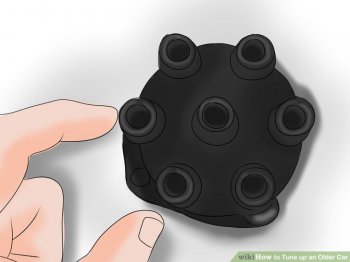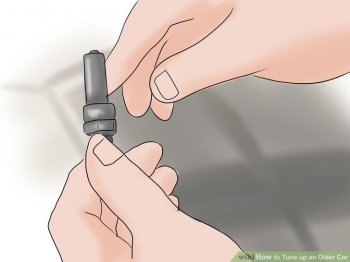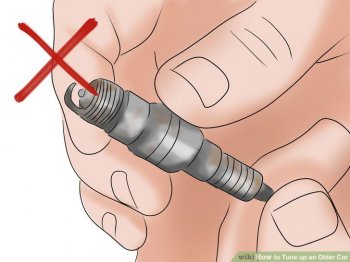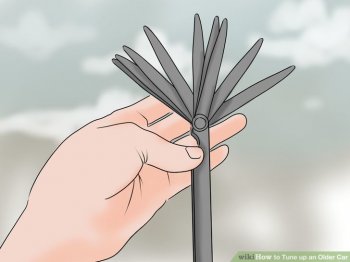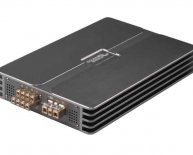
How to Tune up a car engine?
 Obtain information about ignition point gaps, firing order, timing advance and spark plug gaps from the car manual or other reliable source.
Obtain information about ignition point gaps, firing order, timing advance and spark plug gaps from the car manual or other reliable source.
Buy replacement spark plugs, ignition points, ignition leads, condensers as needed. Mostly these will not be required, though it is best to replace the ignition points.
Start with a clean engine. If the spark plug leads are not already numbered, use a marker to do so. This can be wiped off later if you like. No.1 cylinder is at the front of the car. With transverse motors No.1 cylinder is nearest the radiator.
Note where the No.1 lead enters the distributor cap.
Grasp each spark plug lead at the plug end as close to the motor as you can get and pull straight out. This prevents damage to the connector. Do not bend the leads sharply as this can wreck the carbon based inner conductor.
Use a proper spark plug wrench to loosen every spark plug and remove them.
Check the spark plugs. If the electrodes are severely rounded off or the insulators are damaged, do not re-use.
Scrub the plugs with a wire brush and rinse with gasoline/petrol or kerosene and set to dry if you wish to re-use.
Set a feeler gauge to the required gap and place between the centre electrode and the side one. Do not attempt to adjust the centre electrode. Bend the outside one with pliers to open, tap gently on a firm surface to close. A firm sliding fit with the gauge square to the plug shows the correct gap.
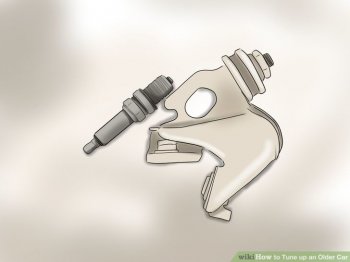 10
10
Remove the distributor cap. You will see a central shaft with a Bakelite rotor above it. This rotor points to the appropriate contact on the inside of the cap as each spark plug fires. Lift the rotor off, be careful that small parts do not drop off. Wipe the contact areas of the rotor with a coarse rag or one stroke along the edge of a matchbox, no more.
11
Inspect the interior of the distributor cap for dirt, cracks, moisture and carbon tracks. If there are carbon tracks or cracks, replace the cap. Otherwise wipe clean, remove deposits from the electrodes and set aside.
12
The ignition points will be held in with two screws. Note that one can be used to set the gap, the other holds the points in place. A wire from the outside of the distributor connects to the condenser and the ignition switch.
13
Remove the ignition points, being careful to note the position and number of any insulating and other washers fitted.
14
Inspect the points for pitting and deposits. Slight pitting is normal and may be dressed off square with a file. The points may then be re-used.
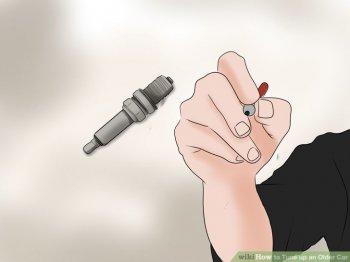 15
15
Pack the angle where the points assembly slides over the cam on the distributor shaft (the follower) with a little blob of high temperature grease. This often comes with a new set of points. Wheel bearing grease may be used. Do not use oil, ordinary grease or petroleum jelly as the spinning shaft will throw the lubricant off and it can get between the points.
16
Look for the centrifugal ignition advance weights which may be partially visible below the baseplate. Give them a gentle poke with a screwdriver to ensure they have not jammed up. There may be a hole marked "Oil" to lubricate them. Two drops of engine oil is enough. Wipe up any oil spillage.
17
Replace the points on the baseplate with washers in the correct places. Put the screws in firmly but do not fully tighten them yet.
18
Rotate the engine clockwise with the spark plugs out and the transmission in neutral (looking from the engine rear)so that the follower is at the top of a shaft cam lobe. Use a wrench/spanner on the hexagon at the bottom pulley.
19
Set a feeler gauge to the correct points gap and wipe it so that it is free of dirt and oil. Place in the gap of the points and tighten the points screws. You will almost certainly not get the gap correct the first time so repeat until the gap is correct.
20
Replace the rotor cap and rotate the engine clockwise until the timing marks on the bottom pulley are opposite the marks on the front of the engine. The rotor cap must be pointing to the position of the No. 1 plug lead. This may take more than one full rotation of the engine as the distributor shaft rotates at half the engine speed.
21
The spark plug fires as the points just begin to open. This should be shortly before the piston reaches top dead centre. The advance is measured in degrees and is usually around 8 to 15. The bottom pulley may have two marks with a single mark on the motor front. The first of these marks is the correct one, the second corresponds to top dead centre. Match the mark on the pulley with that on the engine.
